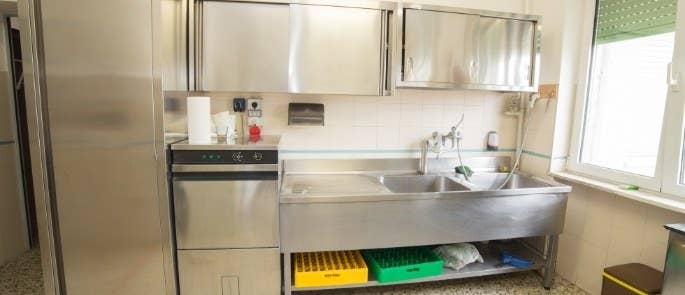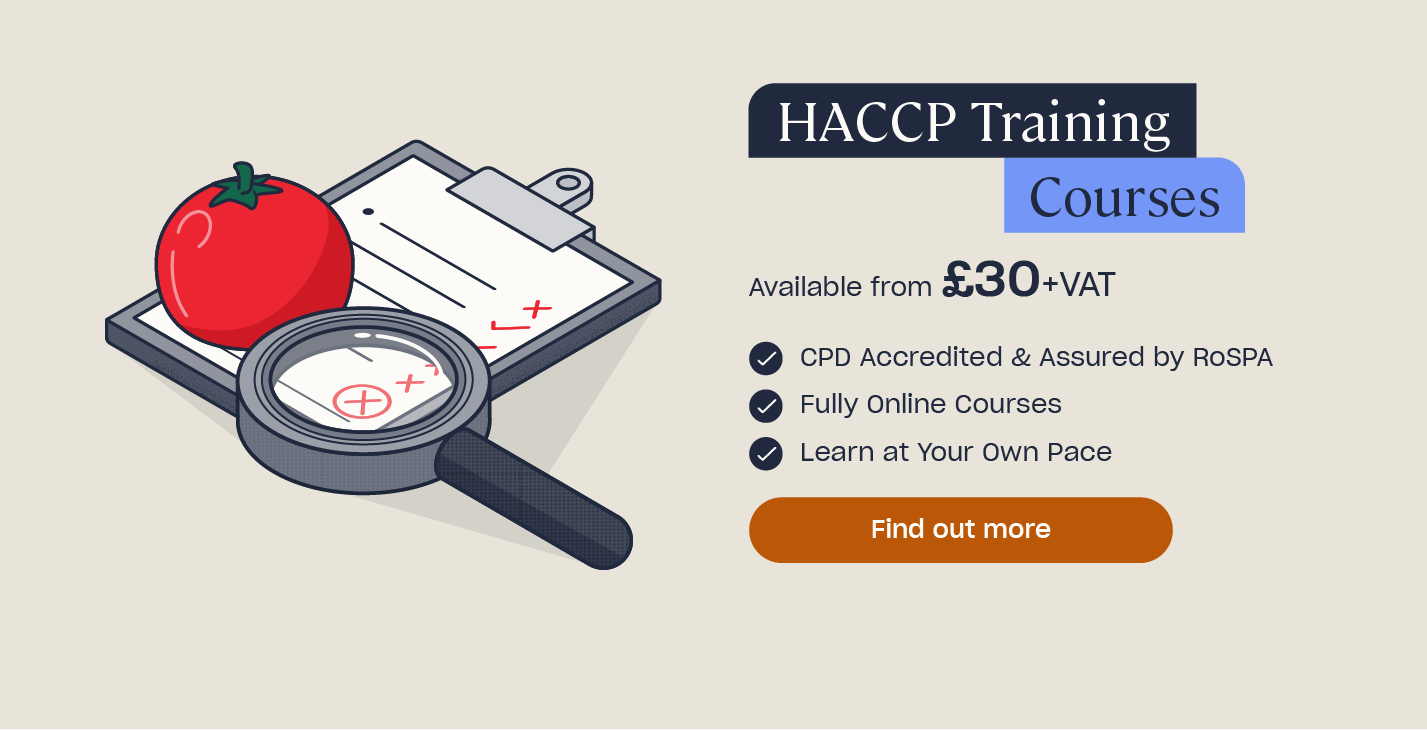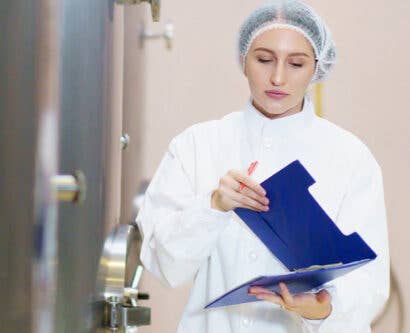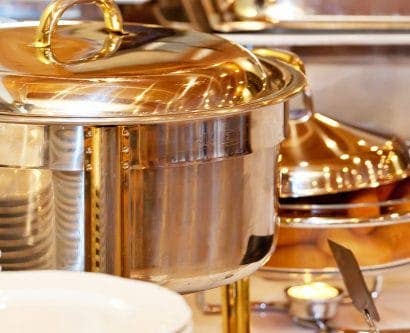Fridge and Freezer Temperature Log Sheets for Kitchens
When working in a commercial kitchen, you’re required by law to follow a number of food safety procedures. One that’s particularly important is managing the temperatures of your fridges and freezers. Doing so ensures you minimise bacterial growth and keep the food that you serve to customers safe.
As controlling your fridge and freezer temperatures is such a critical step, it’s important to carry out regular checks and keep clear records. Many places fail to follow this process, which means they could be at risk of running their fridges and freezers at unsafe and illegal temperatures.
Using a temperature log is a simple and effective way to track the temperatures of your fridges and freezers, which demonstrates to enforcing authorities that you’re following legal requirements. This article will explain how to use one and offers free downloadable templates, for both fridges and freezers, that you can use in your premises.
Why Do I Need to Keep Temperature Logs?
Keeping a temperature log sheet is crucial for ensuring that your commercial fridges and freezers consistently run at safe temperatures. It’s an essential part of your HACCP process, which helps you to demonstrate due diligence to your local authority and protect your customers from harmful food.

Regularly monitoring chilled or frozen food is a vital step in your food management system, which is often referred to as HACCP (Hazard Analysis and Critical Control Points). It enables you to check that temperatures are safe and, if not, to take corrective action. This would involve changing the temperature to what it should be and potentially discarding any unsafe food. You may even identify that equipment needs repairing. Whatever the case, it’s essential to write all of this information down.
Following this crucial part of your HACCP process enables you to prove due diligence, which is your best defence in the case of a legal dispute. Due diligence refers to proving that you took all reasonable steps to prevent safety issues. This is why keeping records is so important: when an EHO inspects your premises, they can check your temperature log sheets to see that you’re doing everything to comply with safe temperatures.
Click here to jump to our free fridge & freezer temperature record sheet templates.
Safe Fridge Temperatures
The law requires food businesses to keep chilled food at 8 ºC or below. As best practice, we recommend you keep it at 5 ºC or lower, so your food is well within the 8 ºC or lower threshold. It also ensures that every part of the fridge remains at an acceptable temperature.
Safe Freezer Temperatures
While food safety law doesn’t specifically state the required temperature of freezers, industry best practice is -18 ºC or lower. It’s vital to keep your freezer at a cold temperature, as it stops bacteria from growing.
If your equipment runs at unsafe temperatures, harmful bacteria can quickly grow in food. This poses a serious risk to consumers’ wellbeing. Failure to check and maintain your fridge and freezer temperatures can therefore easily lead to negative consequences. It only takes a few bad experiences to significantly affect your customer base and land your business in legal issues.
How Often Should Fridge and Freezer Temperatures Be Taken?
The Food Standards Agency recommends that you check and record your fridge and freezer temperatures at least once per day. Depending on the level of risk, you may want to check more frequently. For example, if your food business is open for long hours and people regularly use the fridge.

In these cases, it would be useful to carry out three checks:
- Once when staff arrive.
- Once in the afternoon.
- A final check in the evening.
In our temperature record sheet templates, we’ve included three sections for logging temperatures. You’ll write the time of the check and what temperature the fridge or freezer is in each box.
It’s up to you whether you want to use one or all three. You may even decide that the number of checks you carry out depends on the day. At the very least, however, you should always aim to check them once a day.
How Should I Fill in a Temperature Log Sheet?
Once you’ve downloaded our temperature log sheet template, you can easily implement it into your routine checks. You can print and fill it in manually if you wish, but it’s also editable online if you want to use a tablet or laptop while carrying out inspections.
Following its structure ensures that you properly carry out the checks and keep a record of doing so. It also enables you to note any potential actions necessary and the people responsible for these checks. All of this information is important for due diligence.
Here’s a quick overview of how to complete each section:
- Location: specify the area that you keep your fridge or freezer in.
- Cabinet number: if you have more than one fridge or freezer, note which one you’re checking.
- Time and temperature: fill these in during your checks. You should use a probe and/or the internal temperature gauge to check the temperatures. Remember that the fridge should be 5 ºC or lower and the freezer should be -18 ºC or lower. It’s recommended that you alternate between a probe and the gauge and occasionally use both, to account for cases where one may be faulty.
- Action: make a note of any corrective actions you need to take if the temperatures are not right. For example, changing the temperature manually, discarding food, arranging for repairs, etc.
- Initials: make it clear who carried out the check. This person should have the necessary training to take readings and know who to report to if there’s an issue.
- Supervisor: note who the supervisor in charge is. This is important for ensuring accountability, as they’re responsible for signing off the temperature log sheet at the end of the day.

With a proper recording process, your business will be capable of creating suitable temperature logs that demonstrate compliance. Most importantly, this diligence will keep your fridges and freezers running at the correct temperatures, meaning you’ll provide customers with food that is safe to eat.
Fridge and Freezer Temperature Log Sheets
You can download our free fridge and freezer temperature log sheets below. Use these in your food establishment to track the temperature of your fridges and freezers at least once a day. If you prefer to keep your records online, you can simply download the templates onto your chosen device and fill them in there.
What to Read Next:
- What are High Risk Foods and How Can I Use Them Safely?
- How to Accept Frozen Food Deliveries: A Safety Checklist
- What is the Temperature Danger Zone? Free Food Safety Chart
- A Short Guide to Ventilation in Commercial Kitchens
- Safe Temperatures for Food Storage: A Free Guide to Cooling and Chilling Times
- Kitchen Safety Posters for Commercial Use
- HACCP Training Course











